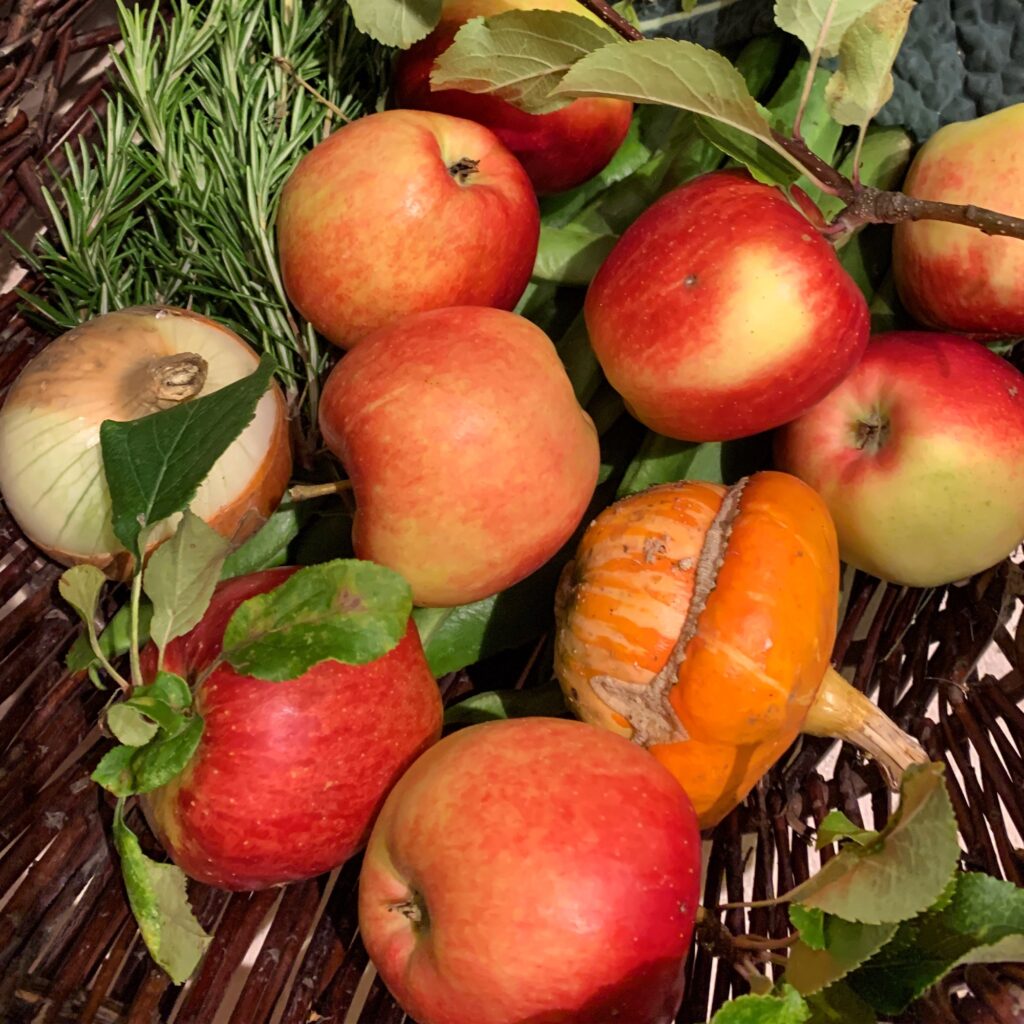Our apples look to soon be ready, I think this is going to be our largest harvest yet! We have two trees at the allotment and two at home, all dwarf and all weighed down with fruit!!

When to Pick Apples
The harvest time can vary depending on the variety, but most UK apples are ready to be picked between September and October, unfortunately I can’t remember our exact varieties.
Here’s how you can tell if your apples are ready:
- Check the Colour: Look at the base colour of the apple. For red apples, the side that isn’t exposed to the sun should have turned from green to yellow. For green or yellow varieties, the green tones should have lightened.
- The Lift-and-Twist Test: Gently lift the apple and twist it slightly. A ripe apple will come off the branch easily. If it resists, it’s not ready.
- Seed Colour: If you’re unsure, cut open an apple. If the seeds have turned brown, your apples are likely ripe.
- Taste Test: There’s no better way to check than having a taste! A ripe apple will have its full flavour and sweetness.
Storing Apples
I plan to keep ours in trays, in the garage, which is dark and cold.
- Separate Bruised Apples: Any apples that are bruised or have been damaged during picking should be eaten first. These won’t store well and can cause nearby apples to rot.
- Keep Them Cool: Apples store best in cool, dark places. A shed or garage that stays between 3°C and 5°C is ideal. If you don’t have a suitable space, the fridge works too – just be mindful of space. For large quantities, wrap individual apples in newspaper to reduce the risk of bruising and to trap moisture.
- Store in Single Layers: Place your apples in a single layer in trays or shallow boxes, ensuring none of them are touching. Apples that touch each other are more likely to bruise and rot. You can add a sheet of cardboard between layers if you need to stack.
- Check Regularly: Every few weeks, check your stored apples and remove any that show signs of rot. This will stop it from spreading to other apples.
Some apples store better than others. If you’re growing or picking apples to store for the winter months, look for these common UK varieties known for their long storage life:
- Bramley’s Seedling: A popular cooking apple that can store for up to six months.
- Egremont Russet: A firm, nutty-flavoured eating apple that can last up to five months.
- Cox’s Orange Pippin: This classic dessert apple can store for a few months under the right conditions.
One of the joys of storing apples is having them available long after the season ends. Stored apples can be eaten fresh, cooked into crumbles, sauces, or chutneys, or even pressed into homemade cider, something I’m yet to venture in to, but it’s on my list!
There’s something wonderful about tucking into an apple pie made from your allotment-grown apples, even as the weather turns colder.
If you have any top tips, please give me a shout on instagram @sarah.diggingtheearth.org.uk
Views: 22
